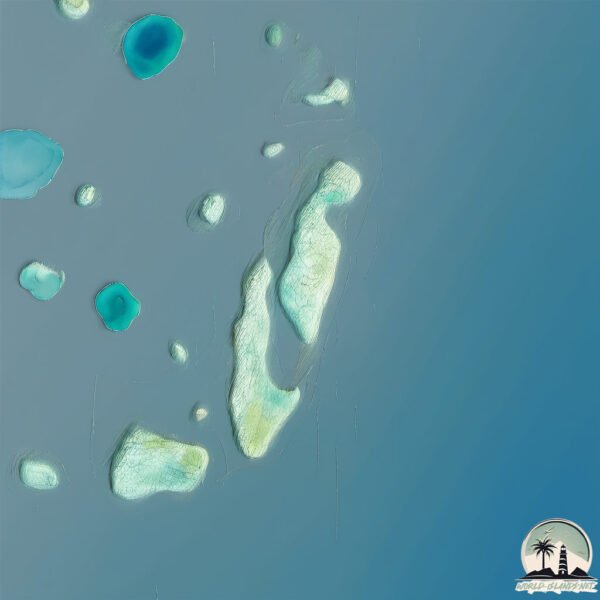Hulhumale

Welcome to Hulhumale, a Tropical island in the Laccadive Sea, part of the majestic Indian Ocean. This guide offers a comprehensive overview of what makes Hulhumale unique – from its geography and climate to its population, infrastructure, and beyond. Dive into the details:
- Geography and Size: Explore the island’s size and location.
- Climate and Weather: Weather patterns and temperature.
- Topography and Nature: Uncover the natural wonders of the island.
- Infrastructure and Travelling: Insights on reaching, staying, and making the most of your visit.
- News and Headlines: Latest News.
Geography and size of Hulhumale
Size: 4.231 km²
Coastline: 19.8 km
Ocean: Indian Ocean
Sea: Laccadive Sea
Continent: Seven seas (open ocean)
Hulhumale is a Small Island spanning 4.2 km² with a coastline of 19.8 km.
Archipel: Maldive Islands – A tropical paradise in the Indian Ocean, known for their stunning coral reefs, diverse marine life, and luxury resorts.
Tectonic Plate: Sunda – Extends across Southeast Asia, encompassing parts of the Sunda Shelf, known for its interaction with the Australian Plate, contributing to volcanic activity in Indonesia.
The geographic heart of the island is pinpointed at these coordinates:
Latitude: 4.21091398 / Longitude: 73.53839366
Climate and weather of Hulhumale
Climate Zone: Tropical
Climate Details: Tropical Monsoon Climate
Temperature: Hot
Climate Characteristics: Characterized by heavy rainfall, high humidity, and uniformly high temperatures, but with a distinct short dry season. It features a seasonal reversal of prevailing wind directions.
Topography and nature of Hulhumale
Timezone: UTC+05:00
Timezone places: Asia/Karachi
Max. Elevation: -7 m
Mean Elevation: -26 m
Vegetation: Urban Area
Tree Coverage: 80%
The mean elevation is -26 m. Remarkably, this unique island barely emerges above the sea level, showcasing nature’s fascinating interplay with the ocean. The island is characterized by Plains: Flat, low-lying lands characterized by a maximum elevation of up to 200 meters. On islands, plains are typically coastal lowlands or central flat areas.
Dominating Vegetation: Urban Area
Regions dominated by human development, including cities and towns, characterized by buildings, roads, and minimal vegetation. Hulhumale has a tree cover of 80 %.
Vegetation: 4 vegetation zones – Diverse Island
Four distinct vegetation zones mark these islands as ecologically diverse. They might feature varied landscapes such as forests, beaches, grasslands, and rocky areas. Such diversity reflects the island’s complex ecological interactions and varied habitats, which can support a rich array of wildlife and plant species.
Infrastructure and Travelling to Hulhumale
Does the island have a public airport? yes.
Hulhumale has a public and scheduled airport. The following airports are located on this island: Malé International Airport.
Does the island have a major port? no.
There are no major ports on Hulhumale. The closest major port is MALE, approximately 3 km away.
The mean population of Hulhumale is 1953 per km². Hulhumale is Densely Populated. The island belongs to Maldives.
Continuing your journey, Vypīn Island is the next notable island, situated merely km away.
Island Guide: Hulhumale



Maldives is classified as Developing region: Regions characterized by lower income levels, with economies in the process of industrialization and modernization. The level of income is Upper middle income.
News – Latest Updates and Headlines from Hulhumale
Stay informed with the most recent news and important headlines from Hulhumale. Here’s a roundup of the latest developments.
Please note: The data used here has been primarily extracted from satellite readings. Deviations from exact values may occur, particularly regarding the height of elevations and population density. Land area and coastline measurements refer to average values at mean high tide.
